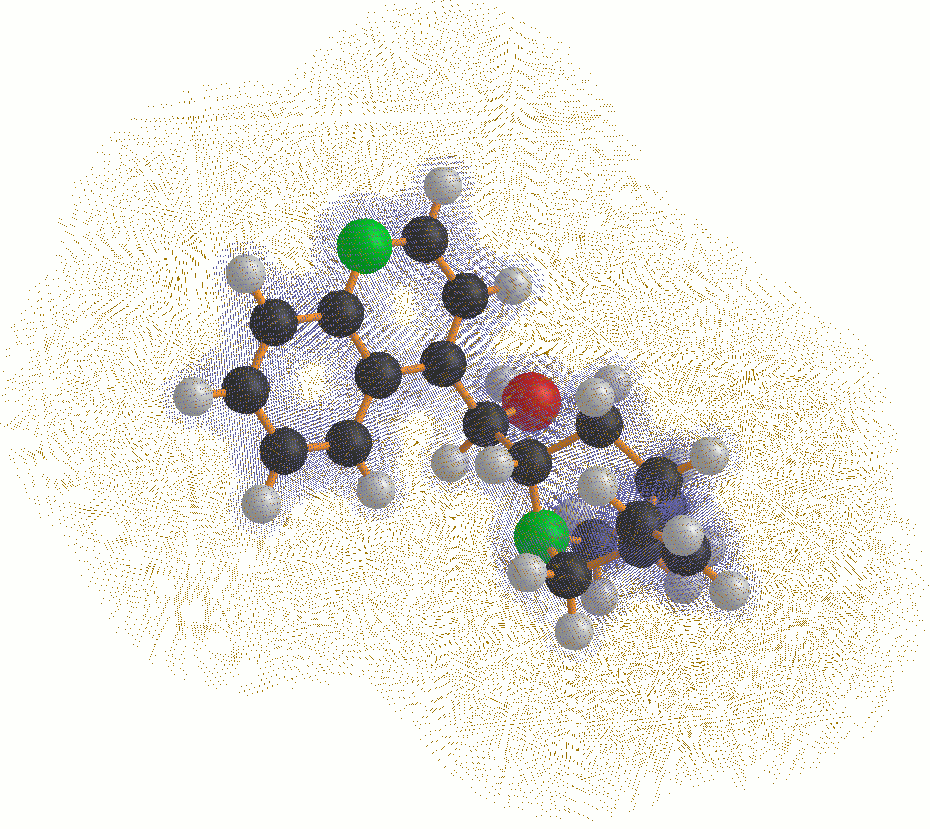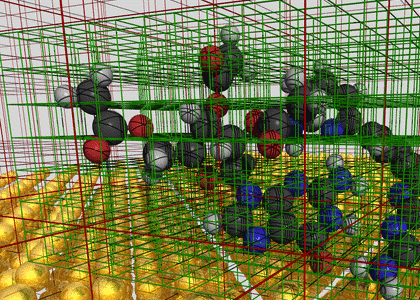Traditionally we considered mainly boundary integral equations. Recently we are focusing our effort on electronic structure calculations. There the major issue is the numerical solution of the

- DFG priority program SPP 1145
"Adaptive solution of coupled cluster equation and tensor product approximation of two-electron integrals"
Homepage - DFG-Schwerpunktprogramms 1324
"Tensor methods in multi-dimensional spectral problems with particular application in electronic structure calculations"
Homepage - Project A7 from the DFG Resaerch Center Matheon
"Numerical Discretization Methods in Quantum Chemistry"
Homepage
Description
In order to achieve optimal computational complexity in electronic structure calculations, i.e. linear scaling concerning system size and more general with respect to the number of degrees of freedom, it is crucial to utilize adaptivity in various places. Within the first part of our project we want to apply recent ideas from multiscale analysis to develop adaptive algorithms for coupled cluster and configuration interaction methods. Here, adaptivity means to select those excitation amplitudes from the full configuration space which contribute most to the energy. Such kind of schemes have been already discussed in the literature, however, we intend to incorporate some new mathematical insights by selecting amplitudes according to appropriate norms, and to apply a posteriori error estimators which enable a quantitative estimate of the remaining approximation error. The second part of our proposal concerns the efficient computation of two-electron integrals which constitutes a major bottleneck of standard quantum chemistry methods. We want to incorporate adaptivity into our previously developed density-fitting scheme based on optimal tensor product approximations. This can be accomplished by means of hierarchical tensor product decompositions as well as adaptive algorithms for convolutions with the Coulomb potential.
Description:
|
Many challenging problems of numerical computations arise from problems
involving a high spatial dimension. For a fine grid resolution even 3
dimensions cause a problem, but 6 or even much higher dimensions require quite
new methods, since the standard approaches have a computational complexity
growing exponentially in the dimension ( curse of
dimensionality). A remedy is the use of data-sparse matrices or corresponding constructions exploiting tensor product representations. Here, we focus on eigenvalue problems in this field. While the design |
 |
| of the algorithms is rather general, the main application are problems from electronic structure calculations. Many of the developed methods may be applied to general problems stemming from elliptic differential or integral operators. In particular, the basic electronic Schrödinger equation is an eigenvalue problem for an elliptic 2nd order partial differential equation in high dimensions. Alternative to a direct treatment of this original problem we would like to exploit successful developments in quantum chemistry, mainly putting newly developed methods on top of well established electronic structure programs. A major focus will be on eigenvalue problems in Density Functional Methods. Perhaps there are further instances where the development of the project would contribute to numerical methods in electronic structure calculation, e.g. adaptive configuration interaction (CI) and coupled cluster (CC) methods and Jastrow factor calculation. | |
Description
| Computer simulation plays an ever expanding role in modern scientific research, and the fields of chemistry, biochemistry, and pharmaceutical research are no exceptions. The model on which our physical understanding of chemistry rests is the Schrödinger equation, the basic equation of quantum mechanics. Approximation techniques for its solutions is an active area of research spanning the fields of chemistry, physics, and applied mathematics. The main problem is that this equation is an equation in 3N space dimensions for a system consisting of N electrons and nuclei. The so-called "curse of dimensionality" prohibits direct approximation techniques for even reasonably |  |
| small systems, and a host of methods have been discovered over the past decades which attack the problem from other approaches. However recent developments indicate that the curse of dimensionality might be broken---or at least brought into the realm of numerical tractability. Among these developments is an improved understanding of the "regularity" of the solutions, together with advances in sparse grid techniques from numerical analysis. The goal of this project is to further refine these ideas and to implement them in efficient numerical algorithms. | |